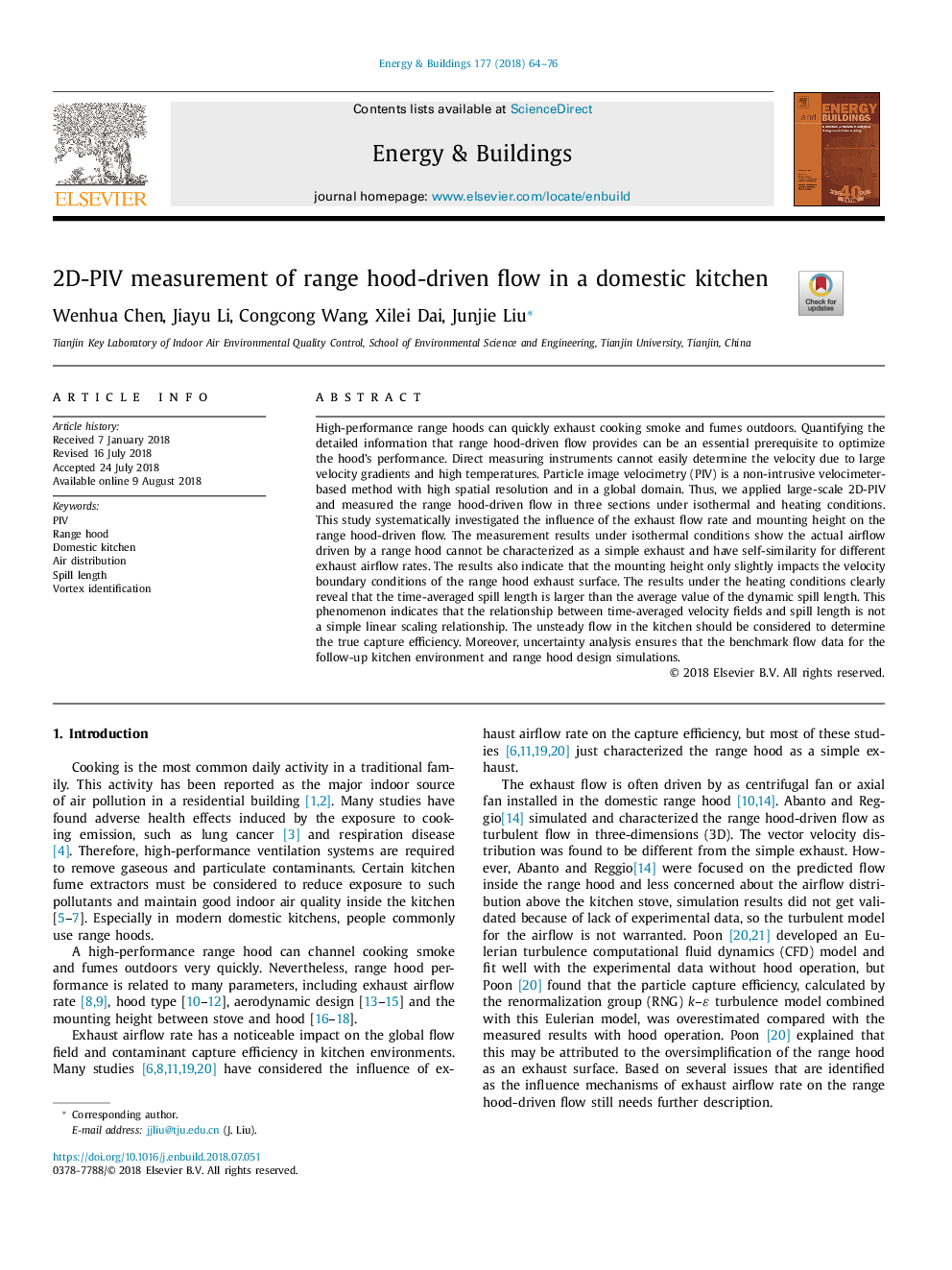| Article ID | Journal | Published Year | Pages | File Type |
|---|---|---|---|---|
| 8941534 | Energy and Buildings | 2018 | 13 Pages |
Abstract
High-performance range hoods can quickly exhaust cooking smoke and fumes outdoors. Quantifying the detailed information that range hood-driven flow provides can be an essential prerequisite to optimize the hood's performance. Direct measuring instruments cannot easily determine the velocity due to large velocity gradients and high temperatures. Particle image velocimetry (PIV) is a non-intrusive velocimeter-based method with high spatial resolution and in a global domain. Thus, we applied large-scale 2D-PIV and measured the range hood-driven flow in three sections under isothermal and heating conditions. This study systematically investigated the influence of the exhaust flow rate and mounting height on the range hood-driven flow. The measurement results under isothermal conditions show the actual airflow driven by a range hood cannot be characterized as a simple exhaust and have self-similarity for different exhaust airflow rates. The results also indicate that the mounting height only slightly impacts the velocity boundary conditions of the range hood exhaust surface. The results under the heating conditions clearly reveal that the time-averaged spill length is larger than the average value of the dynamic spill length. This phenomenon indicates that the relationship between time-averaged velocity fields and spill length is not a simple linear scaling relationship. The unsteady flow in the kitchen should be considered to determine the true capture efficiency. Moreover, uncertainty analysis ensures that the benchmark flow data for the follow-up kitchen environment and range hood design simulations.
Related Topics
Physical Sciences and Engineering
Energy
Renewable Energy, Sustainability and the Environment
Authors
Wenhua Chen, Jiayu Li, Congcong Wang, Xilei Dai, Junjie Liu,
